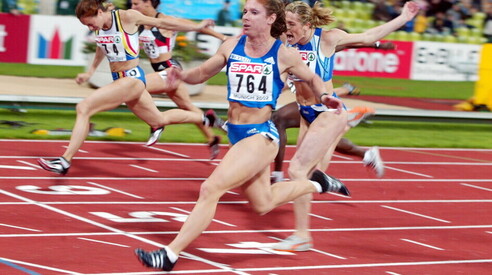"The beautiful youth of our athletics." Interview with Manuela Levorato


Ansa photo
The Sports Newspaper
"The secrets are: hard work and enthusiasm. But now Milan needs to get moving," says the athlete who holds first place in the medal table at the European Junior Championships in Tampere, where sprinting, with five podium finishes, outstripped other disciplines.
On the same topic:
A total of 37 medals (17 gold, 11 silver, and 9 bronze) in the three main European events of the summer at the youth, junior, and under-23 levels: this is Italy's strong youth athletics team preparing us for the World Championships in Tokyo in September, where our five Olympic gold medalists still shine. The final icing on the cake was first place in the medal table (6 gold, 3 silver, and 5 bronze) at the European Junior Championships in Tampere, where sprinting outperformed other disciplines with five podium finishes . This is even more reason to be proud for Manuela Levorato , the former queen of the discipline, who is embracing her new role as federal vice president with the same determination that led her to win two bronze medals in the 100 and 200 meters at the 2002 European Championships in Munich.
How did I experience it? With so much pride to be part of such a movement today. As a former athlete, I see our sport growing not only in membership numbers, but also in media and popular recognition. But behind these successes is, above all, the work and enthusiasm conveyed by President Mei and the federation. If athletics has become a symbol of Italianness, if it fills newspapers and TV like never before, it's because this new youth of athletics has benefited from the serene atmosphere that reigns within teams at every level. On television, a blue spot has been seen following each athlete from the stands; I challenge any other nation to have such a carefree attitude as ours. And yet, there's still much to do...
One of my concerns is that athletics hasn't yet become a permanent fixture in schools as a mainstream sport. But I want to start with Milan, perhaps the only metropolis in the world without a top-notch athletics facility and swimming pool. That's why I'd like the many Tampere medalists who gravitate toward Milan to unite and demand that the city build a functioning outdoor and indoor facility. In Milan, there are coaches and clubs that operate in the desert, but the city needs to invest in athletics. As happened in my hometown of Dolo when they noticed there was a girl who could run...
In 1995, exactly 30 years ago, she won silver at the European Junior Championships in Nyiregyhaza, Hungary, alongside Grillo, Sordelli, and Cosolo. Now that relay team has become gold, thanks to Pagliarini, Castellani, Valensin, and the very young Doualla, who has just decided to withdraw from the World Championships in Tokyo...
My friend Manuela Grillo had pointed out this extraordinary talent to me years ago . Now we have to ask ourselves how to manage her. I think we need to let her continue to have fun. The Federation's job is simply to protect her from excessive attention. I rewarded her for two years in a row at the Caorle cadet championships and I saw a girl who was not at all fearful and self-confident.
Was the climate different when you were an athlete?
"They wouldn't forgive you anything. Today, if you do poorly, President Mei pats you on the back and tells you you'll do better next time. In my specialty, I felt a bit alone without a real competitor on the team. I think all this excitement will also do the overall leader Zeynab Dosso some good, as she'll feel the pressure on her neck."
The Italian athletes in the Tampere relay team cover all ages: Doualla is 15, Castellani is 16, Valensin is 18, and Pagliarini is 19. Whose style of running do you most identify with?
"In terms of size, I'd say Valensin, who's the tallest. In the individual race, she was hampered by a tendon pain she suffered during preparation, but she was able to bounce back and contribute incredibly to the relay gold medal, replacing Calzolari in the final. She likes the 200, but I see her doing well in the 400 as well."
You have a daughter, Giulia, who is 17, and twins who are 10. They could be your daughters. How do you see this new youth?
"My goodness. Compared to us, they're all much more mature and, above all, more self-aware. Comparing them to how we were at their age makes me feel shocked. Maybe it's also the effect of social media, but even in public interviews, they have a different attitude. They're confident, very down-to-earth, and at the same time very serious, not just in training. A beautiful youth."
However, the delicate transition from junior to senior level, which many struggle with, shouldn't be underestimated. The percentage of those who fall through the cracks between junior and senior levels is extremely high.
The good news is that this time the base is so broad that even with these percentages, a good number of athletes would remain in the elite category. I'm reminded of the congratulatory video posted by Edoardo Scotti, who won a historic gold medal in the 4x400 relay in Tampere in 2018. With him, only Sibilio remains at the top level; the other two have fallen by the wayside. Who should safeguard this delicate transition? I'd say first and foremost the coaches, who must study the right transitions, not overdo the loads, and respect balance.
More on these topics:
ilmanifesto





